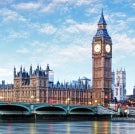Plastic pollution in bees could have major consequences on the global food supply, scientists said Wednesday.
Nanoplastics and microplastics, which are incredibly tiny pieces of plastic that have been broken down over time, can damage the winged insects’ organs and impede their critical role as pollinators.
Bees play an essential part in plant production, working to transfer pollen grains from the male part of a flower to another flower’s female part. While the pollen is a source of protein and other nutrients for the bees, the fertilized flower can then create fruit and seeds, which contain the genetic information needed to produce new plants.
Humans rely on bees more than many might think. Without pollinators, the human race and earth’s land-based ecosystems would not survive. One in three bites of the food people eat depends on pollinators, and globally, nearly 80 percent of crop plants used to make food and other plant-based products requires pollination by animals.
In the US alone, agricultural crops dependant on pollination are valued at $10 billion each year. Tens of billions of honeybees travel thousands of miles to pollinate California almond trees, an industry that adds about $9.2 billion to the state’s nearly $4 trillion-dollar economy.
“We find microplastic in the gut of bees and see how wild bees use plastic to build nests. We therefore urgently need to investigate what interaction this has with other stressors, such as climate change, for the bees and their pollination services,” Dr. Alexandra Maria-Klein, a professor at Germany’s University of Freiburg, said in a statement announcing the findings.
Klein was part of a group of international researchers that published a review of previous studies in the journal Nature Communications last month. The plastic pollution affecting bees, they said, was sourced from plastic films, fertilizers, and polluted water.
“The plastic particles accumulate in the soil, and pollinators and beneficial insects that are important for pest control ingest them from the air and food or use them to build nests,” the university said.
That ingestion damages bees’ digestive systems, resulting in changes in their behavior and weakening their immune systems. The bees can become more vulnerable to diseases, possibly causing them to pollinate less effectively.
The review’s authors warn that a decline in pollination has a negative impact on crop production and could further stress the global food supply. However, the researchers pointed out that the data currently available doesn’t shed light on what effect different amounts and sizes of the plastic have on bees.
Scientists need to conduct further research in this area to understand the problem and find solutions.
”It is already clear today, however, that there is a pressing need for political control of plastic pollution,” Klein said.
And the bees are already threatened by habitat loss, the use of pesticides, disease, pests, and climate change.
A 2015 study found that climate change was reducing bumblebee habitats, and UC Davis researchers say extreme drought and rainfall can affect bee health: drying up pollen and limiting their flying hours. Those extreme events are expected to increase in severity due to climate change.
The world is currently experiencing a mass extinction of insects, with some populations falling by more than 70 percent in just a few decades. Two years ago, NASA research models found 65 percent of the populations they examined could become extinct over the next century.
While some bee populations are stable, others have seen a steep dropoff. The Center for Biological Diversity found in 2017 that, of those with sufficient data, more than half of the over 4,000 native bee species in North America and Hawaii were declining.
In the past five years, aThe Washington Post analysis that used data from the Census of Agriculture, showed America’s honeybee population has jumped. But, the publication noted that domesticated honeybees are a threat to native bee species and inflation might be making populations look artificially high.
Source: independent.co.uk



